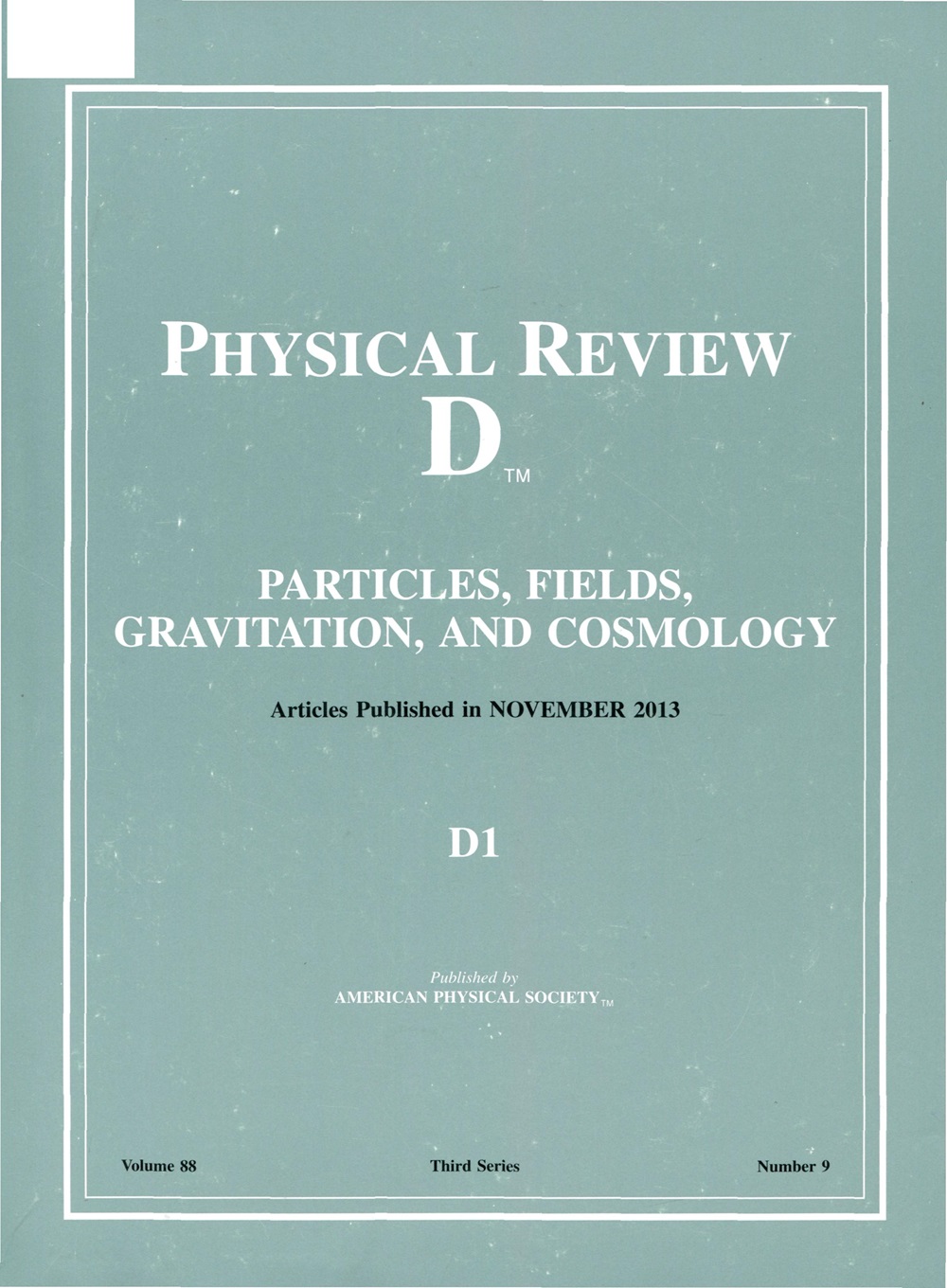没有偏见的重中性轻子
IF 5
2区 物理与天体物理
Q1 Physics and Astronomy
引用次数: 0
摘要
重中性轻子(hnl)为标准模型提供了一个引人注目的扩展,解决了中微子质量、重子生成和暗物质问题。我们进行了一个模型无关的对撞机研究,从汤川耦合(y)中解耦了活性无菌混合角(V),并探索了HL-LHC对快速和位移衰变的灵敏度。我们还考虑了在远端探测器中以FASER形式衰变的hnl是长寿命粒子的可能性。此外,我们研究了FCC-ee对即时和流离失所病例的预期覆盖范围。对于零混合,FCC-ee和HL-LHC对y的灵敏度是相当的,希格斯宽度测量施加了最强的约束。在非零混合情况下,灵敏度受V控制,极大地限制了参数空间。这项工作强调了精确希格斯研究和置换搜索在当前和未来对撞机探测高强度粒子的重要性。2025年由美国物理学会出版本文章由计算机程序翻译,如有差异,请以英文原文为准。
Heavy neutral leptons without prejudice
Heavy neutral leptons (HNLs) provide a compelling extension to the Standard Model, addressing the neutrino masses, baryogenesis, and dark matter problems. We perform a model-independent collider study, decoupling the active-sterile mixing angle (V) from the Yukawa coupling (y y V Published by the American Physical Society 2025
求助全文
通过发布文献求助,成功后即可免费获取论文全文。
去求助
来源期刊

Physical Review D
物理-天文与天体物理
CiteScore
9.20
自引率
36.00%
发文量
0
审稿时长
2 months
期刊介绍:
Physical Review D (PRD) is a leading journal in elementary particle physics, field theory, gravitation, and cosmology and is one of the top-cited journals in high-energy physics.
PRD covers experimental and theoretical results in all aspects of particle physics, field theory, gravitation and cosmology, including:
Particle physics experiments,
Electroweak interactions,
Strong interactions,
Lattice field theories, lattice QCD,
Beyond the standard model physics,
Phenomenological aspects of field theory, general methods,
Gravity, cosmology, cosmic rays,
Astrophysics and astroparticle physics,
General relativity,
Formal aspects of field theory, field theory in curved space,
String theory, quantum gravity, gauge/gravity duality.
 求助内容:
求助内容: 应助结果提醒方式:
应助结果提醒方式:


